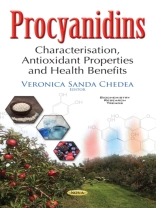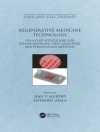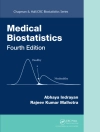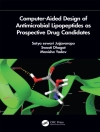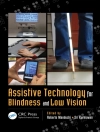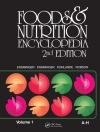Veronica Sanda Chedea is Master of Science in Biotechnology from Mediterranean Agronomic Institue of Chania, Chania Greece since 2004 and doctor in Biotechnology from the University of Agricultural Sciences and Veterinary Medicine, Cluj-Napoca, Romania since 2009. She was awarded prestigious postdoctoral fellowships from the Romanian Ministry of Education and Research, Royal Society UK and Japan Society for the Promotion of Science (JSPS) (2010-2012 Kaken-grants in aid for scientific research JSPS Research Project Number: 10F00713 http://kaken.nii.ac.jp/d/p/10F00713.en.html, 2010 May – July University of the West of England, Faculty of Health and Life Sciences Bristol, UK, Research mobility for the project "Effect of polyphenolics on the alternative splicing of prostate cancer associated genes" awarded by the Royal Society UK.). She has expertise in polyphenols’ analysis and antioxidant/prooxidant activity in model solutions, as lipoxygenase inhibitors, as well as in vitro and more recently in vivo as feed components for farm animal nutrition. She has experience in research activity as a project director: Valorization of wine industry waste as a source of antioxidants for an enriched animal diet – UEFISCDI, RU-TE, 2013-2016, being the most recent one, as a member of the Management Comitte for the COST Action Chemistry and Molecular Sciences and Technologies (CMST) CM1406, Epigenetic Chemical Biology (EPICHEM) http://www.cost.eu/COST_Actions/cmst/CM1406?management and as member team of different national and international department projects. Dr Chedea has published her scientific contribution in national and international journals as; Food Chemistry, Phytochemistry, Journal of Food Biochemistry and she is also reviewer for journals like Food chemistry, Food Research International, Journal of Food Biochemistry, Crystal Growth & Design, Energy & Fuels, African Journal of Food Science, Journal of Bionic Engineering, Journal of Photochemistry and Photobiology B: Biology, Journal of the Serbian Chemical Society, African Journal of Pharmacy and Pharmacology, Journal of Toxicology, European Food Research and Technology, Applied Biochemistry and Biotechnology, Waste and Biomass Valorization. Procyanidins are phenolic compounds from plants and they are abundant in our diet. Research studies on procyanidins have shown that they have many health benefits, especially as preventive agents for cancer, cardiovascular diseases and diabetes. High concentrations of procyanidins can be found in plants and foods such as red wine, grapes, grape seeds, cocoa, berries and apples. The first chapter of this book reviews the occurrence and the structure of these compounds. Since the extraction method is considered a critical step in procyanidin analysis, the second chapter describes the various methods used in literature so far with reference to the most important factors influencing the extraction. Furthermore, common separation and detection methods like high performance liquid chromatography and mass spectrometry are presented in order to give the complex image of the existing methods described so far. These principles of procyanidin fingerprinting are reflected further in studying the seed shells of the Japanese horse chestnut (Aesculus turbinata BLUME), discarded as waste materials after the preparation of edible seeds. The highly polymeric proanthocyanidins from the Japanese horse chestnut were tested for their health benefits, and this is presented in Chapter Three. As the interest in antioxidant compounds increases, the interest in studying their bioavailability has increased as well. In the context of controversy surrounding the studies on procyandins’ absorption and metabolization, the next chapter tries to present different points of view related to this matter. Several applications of procyanidins in food systems are reviewed in Chapter Five, including: Co-encapsulation of green tea catechins on probiotic bacteria viability during simulated gastrointestinal digestion, stability of polyphenolic compounds on alginate, and chitosan microcapsules and procyanidin effectiveness after incorporation into food edible films. The final part of this book investigates the procyanidin structure-activity relationship and mechanisms of cardiovascular diseases because the intake of procyanidins has been associated with reduced cardiovascular disease risk by epidemiologic studies. The expertise of the authors contributing to this book is useful for graduates studying food science and technology, nutrition, pharmacy and health, and for researchers, scientists, policymakers and professionals from food, pharmacy, nutrition and biotechnology industries working on procyanidins’ characterization, antioxidant properties and health benefits.Target Audience:This book is directed to graduates studying food science and technology, nutrition, pharmacy and health and for researchers, scientists, policy makers and professional from food, pharmacy, nutrition and biotechnology industries working on procyanidins’ characterization, antioxidant properties and health benefits.
Veronica Sanda Chedea
Procyanidins [PDF ebook]
Characterisation, Antioxidant Properties and Health Benefits
Procyanidins [PDF ebook]
Characterisation, Antioxidant Properties and Health Benefits
Buy this ebook and get 1 more FREE!
Format PDF ● Pages 214 ● ISBN 9781536102994 ● Editor Veronica Sanda Chedea ● Publisher Nova Science Publishers ● Published 2016 ● Downloadable 3 times ● Currency EUR ● ID 7216119 ● Copy protection Adobe DRM
Requires a DRM capable ebook reader
